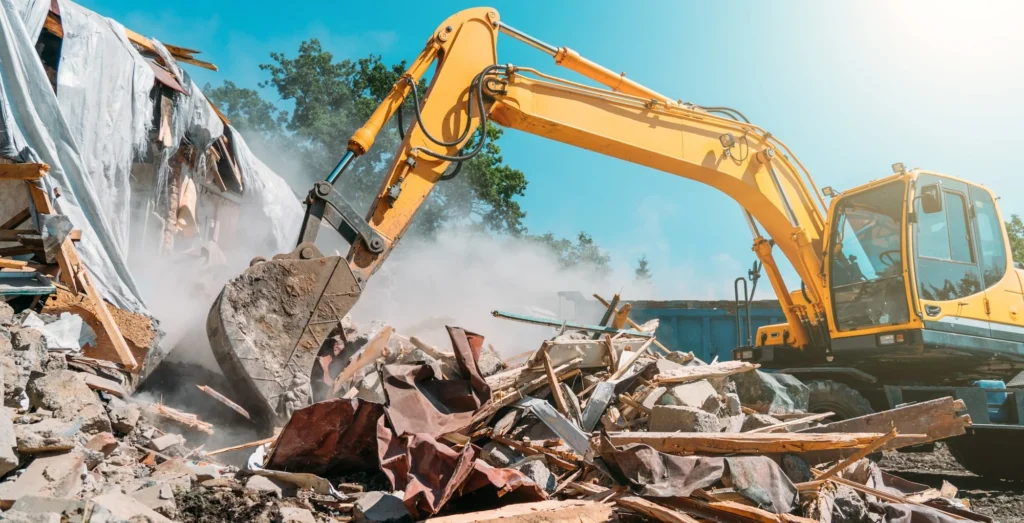The construction and demolition (C&D) industry is one of the largest contributors to global waste, responsible for approximately 40% of total solid waste production. With nearly 100 million tons of C&D debris generated annually in the U.S. alone, effective waste management strategies are essential to minimizing environmental harm and improving industry sustainability.
Despite advancements in recycling and sustainability efforts, a significant portion of construction waste still ends up in landfills, further straining natural resources. Reducing this waste is not just an environmental necessity but also a financial and operational advantage for construction firms. By adopting smarter waste management strategies, companies can lower disposal costs, improve project efficiency, and contribute to a more sustainable future.
Understanding the Primary Sources of C&D Waste
Before diving into waste reduction strategies, it’s important to understand the major factors that contribute to excessive waste in construction and demolition projects. Some of the most common sources of C&D waste include:
- Inefficient Design and Planning – Poor architectural design, inaccurate material estimation, and failure to incorporate sustainable practices during the planning phase can lead to unnecessary material waste. Studies suggest that up to 33% of construction waste stems from inadequate design decisions.
- Demolition Without Deconstruction – Traditional demolition methods focus on speed rather than sustainability, leading to the destruction of potentially reusable materials such as wood, bricks, and metal.
- Material Mismanagement – Improper handling and storage of materials can result in breakage, contamination, and premature disposal. For instance, exposure to moisture or extreme temperatures can render certain materials unusable.
- Lack of On-Site Waste Sorting – Many construction sites fail to implement proper waste separation protocols, resulting in recyclable materials being mixed with general waste and ultimately sent to landfills.
- Limited Awareness of Recycling and Reuse Options – Many companies are unaware of the full range of recycling and disposal services available in their region, leading to missed opportunities for waste diversion.
Proven Strategies for Reducing C&D Waste
To effectively manage and reduce waste in construction and demolition projects, companies must implement a strategic and multi-faceted approach. Below are some of the most effective waste reduction strategies:
- Develop a Comprehensive Waste Management Plan
A well-structured waste management plan is crucial for minimizing waste generation and improving recycling efforts. This plan should be developed before the project begins and include:
- An assessment of the types and quantities of materials that will be used.
- Strategies for material reuse and recycling.
- A list of local recycling facilities and waste disposal options.
- Designated on-site waste sorting stations for different materials.
By setting clear waste reduction goals and establishing guidelines for material handling, companies can significantly decrease unnecessary waste production.
- Prioritize Deconstruction Over Demolition
Rather than demolishing entire structures, companies should opt for deconstruction whenever possible. Deconstruction involves carefully dismantling a building to salvage materials for reuse. This approach offers multiple benefits:
- Reduction in landfill waste – Salvaging materials keeps them out of landfills, reducing environmental impact.
- Lower material costs – Reusing materials can cut down on the need for new purchases.
- Decreased pollution – Traditional demolition releases toxic dust and heavy metals into the air, whereas deconstruction significantly reduces these emissions.
Commonly salvaged materials include wood, bricks, doors, metal fixtures, windows, and insulation. These items can be repurposed for future projects or donated to organizations that support sustainable construction.
- Implement On-Site Waste Sorting and Recycling
Construction sites should establish clearly labeled waste sorting stations to separate materials such as wood, metal, concrete, drywall, and plastics. Many recycling facilities accept C&D waste, allowing companies to divert a significant portion of their waste from landfills.
Companies should also work with local waste management firms to set up recycling pickup services. Some firms even provide dedicated containers for recyclable materials, making it easier to manage waste on-site.
- Invest in Waste Reduction Technology
Advancements in technology have made waste management more efficient than ever. Construction firms can benefit from:
- Smart waste tracking systems – Digital tools that monitor waste generation and disposal in real time, helping companies optimize their waste management practices.
- Construction compactors – High-powered compactors can reduce the volume of waste, making disposal and recycling more manageable.
- Automated sorting systems – Some companies use AI-powered sorting systems to separate recyclable materials from general waste, improving efficiency and reducing labor costs.
By integrating these technologies, construction firms can enhance waste reduction efforts while streamlining overall operations. For more insights on reducing construction and demolition waste, refer to the accompanying resource courtesy of Sourgum Waste.


